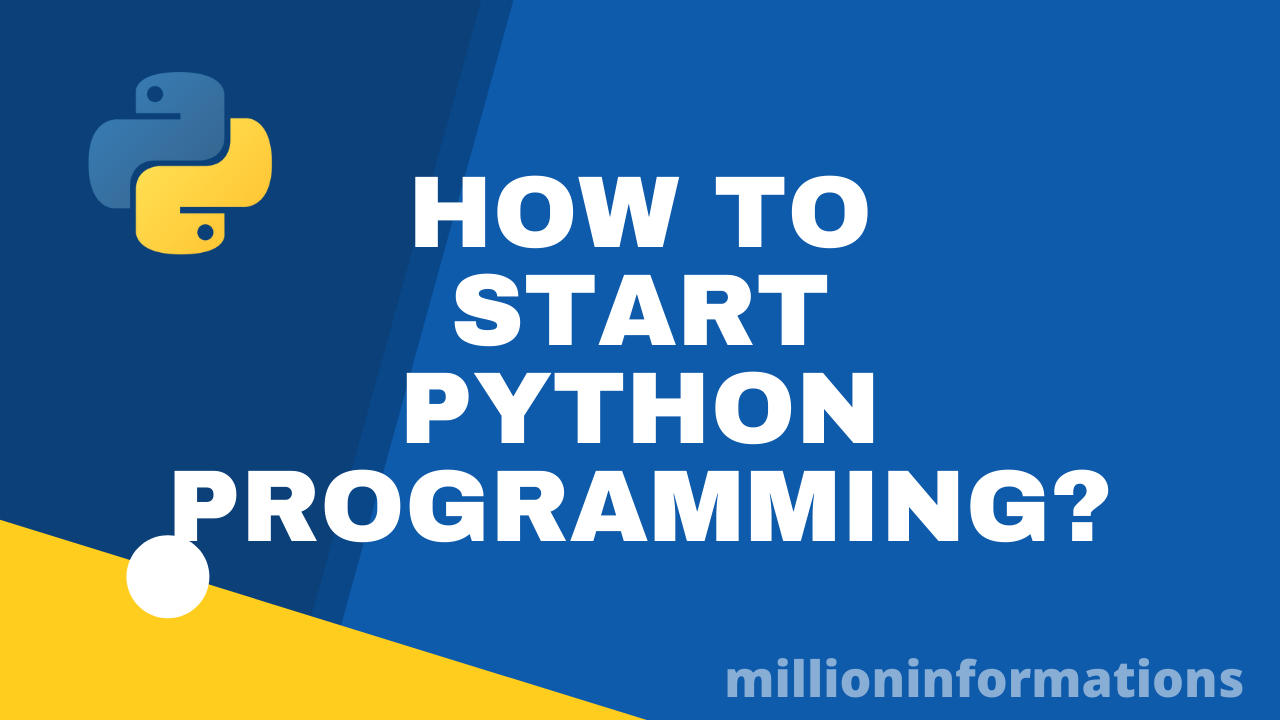Friday 3 March 2023
Chat GPT: The Future of Conversational AI
Chat GPT: The Future of Conversational AI
Introduction:
What is Chat GPT?
How Does Chat GPT Work?
Applications of Chat GPT:
Conclusion:
The Role of Artificial Intelligence in Data Science: A Comprehensive Guide
The Role of Artificial Intelligence in Data Science: A Comprehensive Guide
Introduction:
What is Artificial Intelligence?
The Role of Artificial Intelligence in Data Science:
Applications of Artificial Intelligence in Data Science:
Conclusion:
An Introduction to Deep Learning
An Introduction to Deep Learning
Introduction:
What is Deep Learning?
How Does Deep Learning Work?
Applications of Deep Learning:
Conclusion:
A Beginner's Guide to Machine Learning: What It Is and How It Works
A Beginner's Guide to Machine Learning
Introduction:
Machine Learning is a buzzword that has been making rounds in the tech industry for a while now. It is a field of study that uses algorithms and statistical models to enable machines to learn from data without being explicitly programmed. In this beginner's guide, we'll discuss what Machine Learning is, how it works, and some of its applications.
What is Machine Learning?
Machine Learning is a subset of Artificial Intelligence that involves teaching machines to learn from data without being explicitly programmed. In other words, it is the process of enabling machines to learn by themselves. Machine Learning algorithms use statistical models to identify patterns in data and make predictions based on those patterns.
How Does Machine Learning Work?
There are three main types of Machine Learning algorithms: Supervised Learning, Unsupervised Learning, and Reinforcement Learning.
Supervised Learning: In Supervised Learning, the algorithm is trained on labeled data, which means that the input data and the corresponding output data are provided to the algorithm. The algorithm learns to map the input data to the output data, and it can then make predictions on new, unlabeled data.
Unsupervised Learning: In Unsupervised Learning, the algorithm is trained on unlabeled data, which means that only the input data is provided to the algorithm. The algorithm learns to identify patterns in the data and group similar data points together.
Reinforcement Learning: In Reinforcement Learning, the algorithm learns by interacting with its environment. It receives feedback in the form of rewards or punishments based on its actions, and it learns to take actions that maximize its reward.
Applications of Machine Learning:
Machine Learning has a wide range of applications in various industries, including healthcare, finance, retail, and more. Some common applications of Machine Learning include:
Predictive Modeling: Machine Learning algorithms can be used to build predictive models that can make accurate predictions about future events.
Natural Language Processing: Machine Learning algorithms can be used to analyze and understand human language, which can be useful in applications such as chatbots, voice assistants, and more.
Image and Video Recognition: Machine Learning algorithms can be used to recognize objects, faces, and other visual elements in images and videos.
Conclusion:
Machine Learning is a fascinating field that has the potential to revolutionize various industries. By enabling machines to learn from data, we can make better predictions, automate tedious tasks, and gain insights that were previously hidden. If you're interested in Machine Learning, there are plenty of resources available to get started.
What are the basics of Data Science?
Statistics: Data Science relies heavily on statistics, which is the branch of mathematics that deals with the collection, analysis, interpretation, presentation, and organization of data.
Programming: Data Scientists use programming languages like Python and R to manipulate, clean, and analyze large datasets.
Machine Learning: Machine learning is a subset of artificial intelligence that involves teaching computers to learn from data without being explicitly programmed. It is used to build predictive models, identify patterns, and make data-driven decisions.
Data Visualization: Data Scientists use data visualization tools to represent complex data in a way that is easy to understand and interpret. This includes creating charts, graphs, and interactive dashboards.
Data Cleaning: Data Cleaning involves removing or correcting inaccurate, incomplete, or irrelevant data to ensure that the analysis is based on accurate and reliable data.
Data Integration: Data Integration is the process of combining data from multiple sources to create a unified view of the data. This is often necessary because data is often scattered across multiple databases or file formats.
Data Exploration: Data Exploration involves analyzing the data to identify patterns, relationships, and insights that can be used to inform decision-making.
How to get a job in Data Science domain?
Here are some steps you can take to get a job in the Data Science domain:
Learn the basics: Start by learning the basics of Data Science, including statistics, machine learning, data visualization, and programming languages like Python and R.
Get a relevant degree or certification: Consider getting a degree in Data Science or a related field, or earning a certification in Data Science or a specific skill, like machine learning or data visualization.
Build a portfolio: Create projects that showcase your Data Science skills, such as data analysis, modeling, and visualization. These can be personal projects or projects completed through courses or bootcamps.
Gain practical experience: Look for internships or entry-level positions in Data Science to gain hands-on experience and learn from experienced professionals.
Network: Attend industry events, join online communities, and connect with professionals in the Data Science field to build your network and learn about job opportunities.
Apply for jobs: Look for job postings for Data Scientists and related positions, and tailor your resume and cover letter to highlight your relevant skills and experience.
Prepare for interviews: Practice answering common Data Science interview questions and be prepared to discuss your projects and experience.
Remember that the Data Science field is constantly evolving, so it's important to stay up-to-date with the latest technologies and trends. Continuing education through courses, conferences, and online resources can help you stay competitive and advance your career in Data Science.
Sunday 17 July 2022
What is Data Science? - End to End project - part 1
2. Data Collection
3. Data Analysis
4. Machine Learning Model
5. Insights
Saturday 16 July 2022
What is Data Science?
Data Science is a combination of multiple disciplines that use statistics, data analysis and machine learning to analyze data and extract knowledge and insights from it.
What is the Use of Data Science?
Data Science is the art of providing insights based on the provided data from the client or data collected based on the business requirement.
Data Science is a field that has gained significant attention in recent years, thanks to the increasing importance of data-driven decision making. In simple terms, Data Science is the process of extracting insights and knowledge from large and complex data sets.
The field of Data Science is interdisciplinary and draws on concepts from computer science, statistics, mathematics, and other related fields. It involves a combination of data collection, cleaning, processing, analysis, and visualization, with the ultimate goal of extracting meaningful insights that can be used to inform business decisions.
One of the key benefits of Data Science is that it allows organizations to gain a deeper understanding of their customers, operations, and overall performance. By analyzing data, businesses can identify trends, patterns, and areas for improvement, which can ultimately lead to increased efficiency, profitability, and customer satisfaction.
Data Science is also a rapidly growing field, with high demand for skilled professionals who can work with large and complex data sets. In fact, according to the U.S. Bureau of Labor Statistics, employment of computer and information research scientists (which includes Data Scientists) is projected to grow 19 percent from 2020 to 2030, much faster than the average for all occupations.
If you're interested in pursuing a career in Data Science, there are a variety of educational and training programs available, ranging from online courses to degree programs. Many of these programs focus on developing skills in areas such as data analysis, machine learning, and programming.
In conclusion, Data Science is an exciting and rapidly growing field that offers numerous opportunities for skilled professionals. By leveraging the power of data, businesses can gain valuable insights that can help them make better decisions and achieve greater success. If you're interested in pursuing a career in Data Science, there are a variety of resources available to help you get started.
That Insight will be the output of a data science project where it will help us to make any of the below.
1. Decision Making
2. Prediction
3. Pattern recognition
these things will help us to make better decisions on business plans, products to be launched, prioritising the priority work, and strategies that will make more revenues.
This is why companies invest a lot in data science.
In the upcoming post, we will learn about How an End to End data science project will be, and what are the opportunities in this domain.
.png)
.png)
.png)
.png)
.png)

.png)





